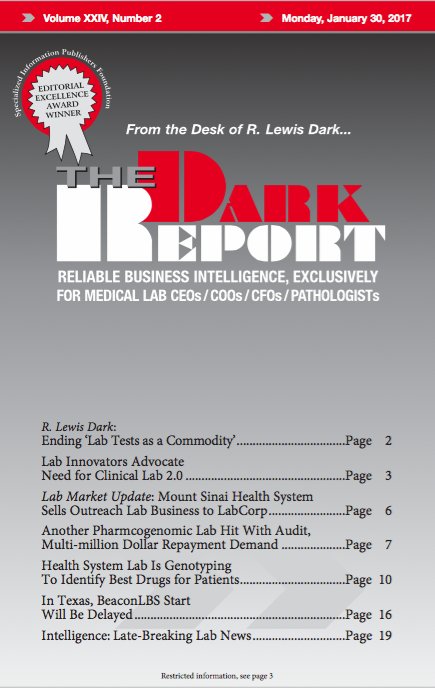CEO SUMMARY: It is generally recognized that the clinical lab industry faces a financial squeeze of unprecedented dimensions. Lab test prices are falling steadily and more major cuts are coming to Medicare Part B fees in just 11 months. At the same time, obtaining favorable coverage and reimbursement decisions from payers is becoming tougher. This …
Lab Innovators Advocate Need for Clinical Lab 2.0 Read More »
To access this post, you must purchase The Dark Report.


